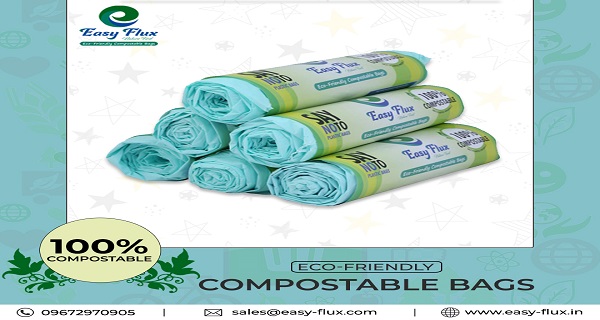How Compostable Bags are made? | Easy-Flux.in
Easy and Profitable Process for the Making of the
Compostable Bags
On the reduction of plastic bags
for commercial exchanges and especially now with the recent legislation on the
reduction of the consumption of plastic bags, the industry of the sector faces
the challenge of manufacturing first bio plastic that will later become
biodegradable plastic bags and that can also be compostable.
Composition of biodegradable and compostable bags
The bioplastic is derived from
plant products such as potato starch or corn starch.
Starting from bags made from
bio plastics, it already indicates that these will biodegrade in compostability
conditions and in an approximate time of 9 months (at temperatures between 60
to 70 degrees Celsius and relative air humidity between 40-60%).
However, if it is not disposed of
in this way, it has a shorter life in the environment compared to polyethylene,
it has the ability to decompose under normal conditions in a year and a half,
this also logically does not imply that you abandon them to free will.
Natural resources to replace polymers
When it is been talked about
compostable bags, the polymers with which high or low density polyethylenes are
manufactured, are replaced by natural resources usually potato starch or corn
starch. These renewable plant-based resources make it possible to change the
origin of the plastic raw material by becoming bio plastic without having to use
petroleum by-products.
Properties of compostable bags
The properties of biodegradable
bags are the same as those of polyethylenes, that is to say it has the same
flexibility, they are very resistant, waterproof, moisture resistance.
Correct recycling of compostable bags
As for recycling, it can be
deposited in a container of only organic waste (likely to become compost) but
at this time there are very few containers of this type and it remains as a
pending subject for municipalities, meanwhile one has to be deposit them in the
“the rest” containers (that is, what is not glass, plastic, metal or paper).
Regulations for compostable packaging regulation
There is a standard that
regulates compostable containers of plant origin, compostable and
biodegradable, which comply the authentication standard.
This European standard specifies the requirements and procedures to
determine compostability :
These requirements could be summarized in:
Composition control: the elements
that make up the material and that are harmful to the environment for exceeding
heavy metal limits should not be introduced, as they are not suitable for
organic recovery.
And an evaluation, where the
whole thing is analyzed:
The constituents of the material
including heavy metals,
You can check its
biodegradability which would be that in 6 months 90% has degraded,
Disintegrate in a pre-defined
maximum size, that is, in fragments smaller than 2 × 2 mm after 4 months.
And above all that this resulting
biological residue is suitable for compost.
When the containers have
components that may not be compostable, the packaging as such is not considered
compostable unless it can be easily separated by hand before disposal, which
once separated can be considered compostable.
With this standard, the control
of the container in waste treatment plants is taken into account, but it does
not take into account packaging or packaging waste that may end up in
uncontrolled means, that is, garbage.
Biodegradable materials to reduce the impact on the environment
Working with biodegradable
materials will help us reduce that negative impact on the environment and that
the neglect of some worsens day after day.
Commitment to the environment
Professionals and expert
companies anticipating the changes that will occur with the entry into force of
the new regulations of plastic bags in stores, expert companies as well as
professionals are working to incorporate biodegradable and compostable
materials in the entire range of products are manufactured.
Other factors to keep in mind
Cities and towns use to spend
less money in the end in the removal of plastics from wastewater treatment
plants. The lakes and streams are less polluted. The results lead to a more
balanced and healthy habitat.
The use of this type of bags in
all homes is highly recommended. These days, everyone should do their part to
save the planet, and can do so by reducing the use of any product that has been
proven to affect the planet. Biodegradable products are great alternatives.
Best of all, it will not pose any threat to the environment.
Conclusion
These days, more countries happen
to be advocating the use of compostable bags in each home. It is a better way
to get a greener planet free of threats. Organic products can be bought in
today's markets. More and more people are realizing the damage that the planet
has been acquiring for quite some time and if everyone makes few changes in
their daily habit, they can contribute to saving the planet. They should start
at home and with the proper disposal of waste using ecological plastic bags.


Comments
Post a Comment